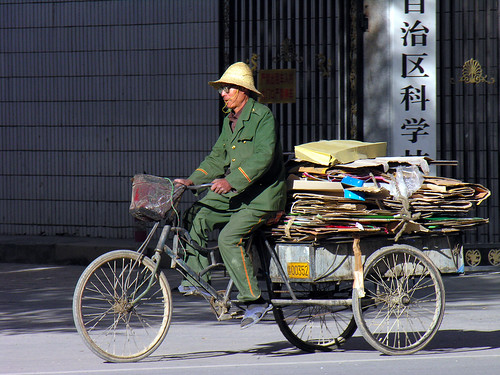
Image by Dennis Jarvis (flickr/archer10), CC BY-SA 2.0
SARS-CoV-2 is an intrepid world traveler, but not an easy rider. And—politics notwithstanding—I believe the medical, scientific and governmental institutions are doing all they can to contain it. It’s challenging because the virus moves so efficiently; while effectively analyzing a new scenario typically requires time to build data.
We’ve seen a commendable concerted effort to meet this challenge. As evidence, I’m pleased that a scientific review of herbal compounds relating to possible anti-SARS-CoV-2 activity has been published in a short timeframe (Zhang, 2020); and it appears thorough. Even so—hygiene, etiquette, social distance, and quarantine will be the most effective means of viral infection control.
From experiences with SARS (2002/3) and MERS (2012), 115 naturally occurring compounds have been identified as showing anti-coronavirus activity. Based on the compounds’ digestive absorption, distribution within the body, metabolism, and elimination, the list was pared down to 13 candidates.
These candidates relate to individual compounds only. To identify Chinese herbs that might address SARS-CoV-2, they had to contain at least 2 of the compounds and to have been historically used to treat viral respiratory infections.
According to the referenced research, there are 26 plants that may help fend off SARS-CoV-2. Depending on their action, they may be used to either treat COVID-19 or prevent infection. These herbs are listed below with suggested time of use, i.e. during stages of prevention, early onset or suspected exposure, or infection.
For prevention
-
- Fortunes bossfern rhizome
For early onset, or suspected exposure
-
- Tamaricis cacumen*
- Erigeron breviscapus
- Bupleurum root
For infection, depending on symptoms
-
- Forsythia fruit
- Licorice root
- Mulberry root bark
- Chrysanthemum flower
- Tussilage flower
- Honeysuckle flower
- White mulberry leaf
- Hogfennel root
- Wild buckwheat rhizome*
- Coptis rhizome
- Houttuynia
- Hovenia seed
- Inula flower
- Loquat leaf
- Astragalus root
- Lepidium seed
- Marlberry*
- Aster root
- Sun spurge*
- Ginkgo nut
- Anemarrhena rhizome
- Epimedium herb
The herbs marked with (*) are not readily available in the U.S. So they would need to be analyzed for accessible substitutes.
There’s a but…
Now, I like identifying options. So I find the above list valuable because it expands the clinical repertoire. However, for mild COVID-19 cases, I believe the simplicity of rest and nourishment (as outlined here) should be sufficient. For severe cases, I would rather you go to the hospital for biomedical support. Pneumonia is life-threatening to the vulnerable population segment, where the severe cases are prevalent.
That being said, you have voting rights on the determination of your healthcare. So if you’d like to talk about the herbal options above, please feel free to contact me.
Interestingly, woad root (which I discussed here) was not included by the study referenced in this post.
Reference
Zhang DH, Wu KL, Zhang X, Deng SQ, Peng B. In silico screening of Chinese herbal medicines with the potential to directly inhibit 2019 novel coronavirus. J Integr Med. 2020; 18(2): 152-158.

